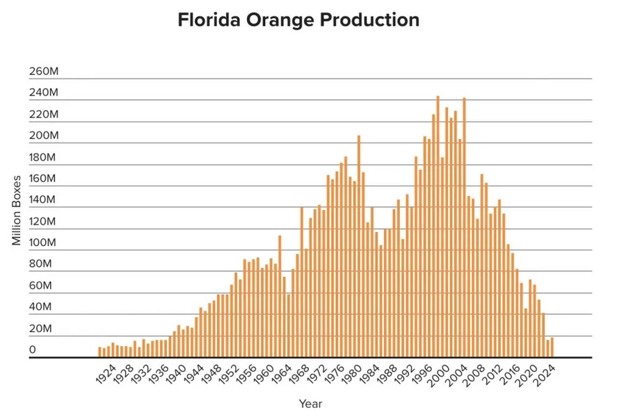Orange juice, once prevalent in American households, is experiencing a decline amidst challenges such as trade conflicts, climate change, and citrus greening. The U.S. Department of Agriculture forecasts Florida's orange crop to reach pre-World War II levels, with an expected production of just over 11.5 million boxes for the 2024-2025 cycle, marking a decrease of more than 30% from the previous season.
Despite the drop in production, some citrus prices at grocery stores have begun to decrease, reflecting changes in consumer behavior and market dynamics. Research published in Agribusiness indicates that consumption has fallen by more than 50% since 2000, influenced by shifting tastes, health concerns, and rising prices.
External factors impacting the industry include trade wars and hurricanes like Irma, Ian, and Milton, which have caused significant crop damage in Florida. The spread of citrus greening, a bacterial disease with no cure, further exacerbates challenges, forcing growers to destroy affected trees. Experts from the University of Florida note that infected trees suffer from impaired nutrient flow, reducing fruit production.
Financial difficulties have also affected major producers, including Tropicana. A quarterly report from a minority owner highlights the brand's depreciating value in the evolving market. Tropicana, founded in Bradenton, Florida, in 1947, was noted for bringing fresh juice to the masses. However, current struggles may create opportunities for growers in regions like California and international markets such as Brazil and Spain.
Brazil, the world's largest citrus producer, faces similar challenges. An agricultural report on Brazil's growers states, "Dry weather has reduced fruit production for five consecutive seasons in the citrus belt, which is composed of the northwest of São Paulo and the western part of Minas Gerais, known as 'Triângulo Mineiro.'" The report notes that recent regular rains since October 2024 have improved flowering, suggesting a potential recovery in production for MY 2024/25
Source: New York Post


